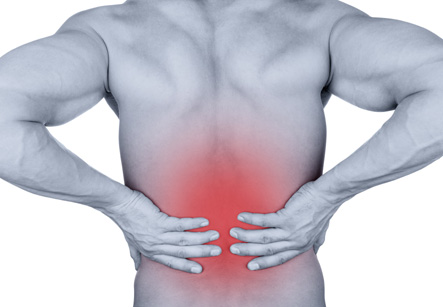Back Pain
Introduction
Back pain is a very common complaint. Back pain is a common reason for absence from work, or visiting the doctor. Even though back pain can affect people of any age, it is significantly more common in adults aged between 35 and 55 years.
Causes of back pain
1. Strenuous physical work
2. Strained muscles or ligaments
3. Lifting heavy object improperly
4. The result of an abrupt and awkward movement
5. A muscle spasm
We have all the information you need about public and private clinics and hospitals that provide spinal surgery in Iran, Islamic Republic Of with the best quality and lowest possible prices

6. Structural problems in spine which include:
• Ruptured disks – each vertebra in our spine is cushioned by disks. If the disk ruptures, it exerts pressure on a nerve, resulting in back pain.
• Bulging disks – also known as herniated disk can also result in more pressure on a nerve.
• Sciatica – a sharp and shooting pain which radiates through the buttock and down the back of the leg, caused by a bulging or herniated disk pressing on a nerve.
• Arthritis – patients with osteoarthritis causes problems in the joints of the hips, lower back, knees and hands.
• Abnormal curvature of the spine – kyphosis or scoliosis.
• Osteoporosis – bones, including the vertebrae of the spine can become brittle and porous, making compression fractures more likely.
Some other causes of back pain include:
1. Cauda equina syndrome – the cauda equine syndrome is compression of a bundle of spinal nerve roots that arise from the lower end of the spinal cord.
2. Cancer of the spine – a tumor located on the spine may press against a nerve.
3. Infection of the spine – this can also cause back pain.
4. Other infections – pelvic inflammatory disease (females), bladder or kidney infections.
5. Sleep disorders – Individuals with sleep disorders are more likely to experience back pain.
6. Shingles – an infection that can affect the nerves.
7. Bad mattress
Back pain can also be the result of some everyday activity or poor posture. This can include:
1. Bending awkwardly
2. Pushing or pulling something
3. Standing or bending for long periods
4. Twisting, coughing and sneezing
5. Over-stretching
6. Sitting in a hunched position for long periods or long driving sessions
Diagnosis:
Most general practitioners are able to diagnose back pain after carrying out a physical examination, and interviewing the patient. In the majority of cases imaging scans are not required.
Tests are recommended only in case of suspected underlying cause, an injury, or long-standing backache.
The tests include:
1. X-rays of the back
2. CT (computerized tomography) scan
3. MRI (magnetic resonance imaging) scan
4. Bone scan – for bone tumors or compression fractures caused by osteoporosis.
5. Electromyography – the electrical impulses produced by nerves in response to muscles is measured.
6. Blood test if infection is suspected.
Treatment options for back pain:
In the vast majority of cases, the back pain resolves itself without medical help with careful attention and home treatment. Pain can usually be alleviated by over-the-counter painkillers and resting for a couple of days.
If home treatments do not give the desired results, a doctor may recommend the following:
Medication:
1. Prescription NSAID (nonsteroidal anti-inflammatory drugs)
2. Codeine or hydrocodone (narcotics) for short periods under monitoring
3. Tricyclic antidepressants, such as amitriptyline
Physical Therapy – the application of heat, ice, ultrasound and electrical stimulation, as well as some muscle-release techniques to the back muscles.
Cortisone injections – Cortisone, an anti-inflammatory drug, may be injected into the epidural space (space around the spinal cord).
Botox (botulism toxin) are thought to reduce pain by paralyzing sprained muscles in spasm. These injections are effective for about three to four months.
Surgery – surgery for back pain is very rare. The surgical procedures can include:
Spinal fusion – Two vertebrae are joined together, with a gone graft inserted between them. The vertebrae are splinted together with metal plates, screws or cages.
Artificial disk – an artificial disk is inserted which replaces the cushion between two vertebrae.
Discectomy (partially removing a disk) – a portion of a disk may be removed if it is pressing against a nerve.
Partially removing a vertebra – a small section of a vertebra may be removed if it is pinching the spinal nerves.
CBT (Cognitive Behavioral Therapy) – CBT can help patients with chronic back pain. The therapy is based on the principle that the way a person feels is, in part, dependent on the way they think about things.
Complementary therapies:
According to studies, chiropracty, osteopathy, shiatsu and acupuncture may help relieve back pain, as well as encouraging the patient to feel relaxed.
An osteopath is a person specialized in treating the skeleton and muscles.
A chiropractor treats joint, muscle and bone problems – the main focus being the spine.
Shiatsu is a type of massage along energy lines in the body. The shiatsu therapist applies pressure with his/her fingers, thumbs and elbows.
Tests are recommended only in case of suspected underlying cause, an injury, or long-standing backache.
Acupuncture consists of inserting fine needles and specific points in the body. Acupuncture can help the body release its natural painkillers known as endorphins.
TENS (transcutaneous electrical nerve stimulation) – The TENS machine delivers small electric pulses into the body through electrodes that are place on the skin.